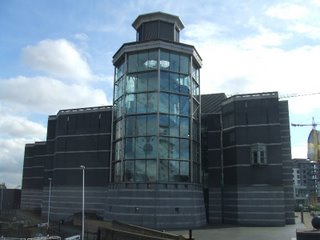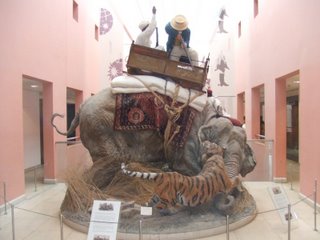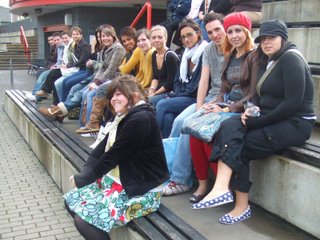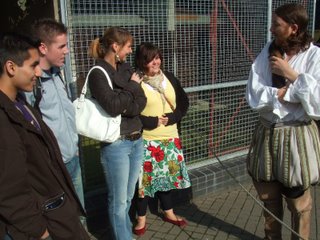 Today the group went on the its first external visit to the Royal Armouries Museum in Leeds. The day began with a talk by Maurice Tarlo on the museums and cultural sector in general, including modern developments in a museums ability to be an educational story-teller with the Storyeum in British Columbia, Canada being highlighted as one of many examples.
Today the group went on the its first external visit to the Royal Armouries Museum in Leeds. The day began with a talk by Maurice Tarlo on the museums and cultural sector in general, including modern developments in a museums ability to be an educational story-teller with the Storyeum in British Columbia, Canada being highlighted as one of many examples.  After being given evaluation forms of the Royal Armouries, students were asked to visit a gallery in order to complete an appraisal on the experience of doing so, before meeting to attend a monologue interpretation. The interpreter (or actor) gave a very powerful account of the life of Second World War spy Eric Erickson immortalised in the 1962 film, the Counterfeit Traitor.
After being given evaluation forms of the Royal Armouries, students were asked to visit a gallery in order to complete an appraisal on the experience of doing so, before meeting to attend a monologue interpretation. The interpreter (or actor) gave a very powerful account of the life of Second World War spy Eric Erickson immortalised in the 1962 film, the Counterfeit Traitor.After Peter's, talk both Peter and Museum Chief Executive Officer Paul Evans hosted a question and answer session, at which they gave a frank and very honest assessment of their own personal motivations as senior figures at the armouries including their motivations to work in the Public sector having predominantly private sector backgrounds. Paul also highlighted the difficult circumstances under which the museum operates, including the fact that valuable revenues from the museum's commercial catering operations do not go back into the museum. The Royal Armouries underwent financial difficulties in the early years after it was opened in Leeds in 1996, it was a public-private partnership, of which the private partnership faced bankruptcy with huge debts. As part of the agreement to save the museum it was agreed that commercial catering revenues would go back into the private company.
Paul also spoke of the Government's requirement of National Museums to have to save 7% per year for the next three years from their operating budgets, which equates to just over a fifth of the entire operating budget, something that is certainly not an easy task, and will require additional and innovative income generating activites to achieve.

After this the students were invited to attend a tudor horse riding display, where they saw costumed entertainers demonstarting horse riding and weaponary skills.
 As an educational day out, the Royal Armouries demonstrates a proven ability to put across information in a varying number of ways. It is certainly worth a visit, as is the surrounding Clarence Dock area of Leeds City Centre which is currently going through a period of major urban improvement and development.
As an educational day out, the Royal Armouries demonstrates a proven ability to put across information in a varying number of ways. It is certainly worth a visit, as is the surrounding Clarence Dock area of Leeds City Centre which is currently going through a period of major urban improvement and development.

No comments:
Post a Comment